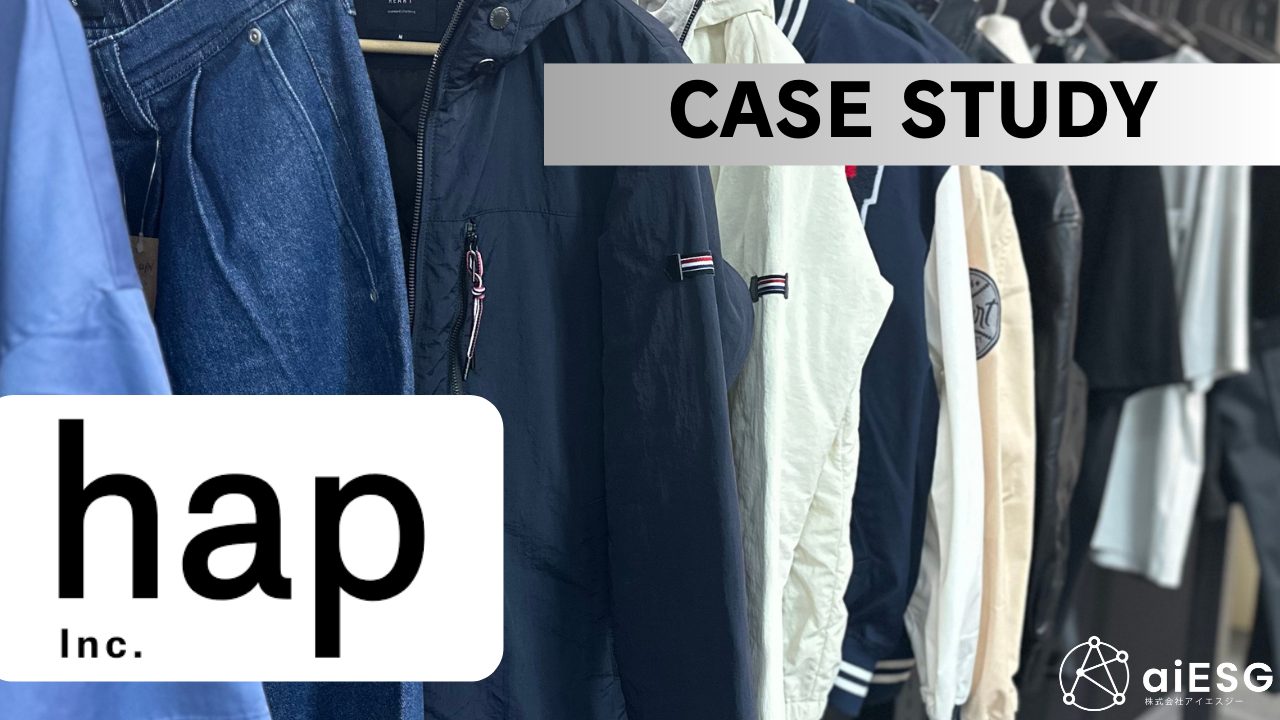INDEX
A case study article on supply chain ESG analysis for the apparel company hap, Inc. is now available.
hap, Inc. aims to realize sustainable fashion, and is developing a wide range of businesses from branded business to apparel of environmentally friendly and comfortable multifunctional products, and development of smart textiles and smart wear.
The apparel industry faces serious challenges in terms of environmental impact, including human rights violations and significant water usage during the manufacturing process. In this case, we utilized aiESG analysis to conduct a comprehensive ESG assessment of water impact, human rights, forced labor, and economic evaluation throughout the supply chain to improve transparency of the apparel industry's complex supply chain.
Case Study] ESG Assessment of an Apparel Company, hap, by aiESG
〜Visualizing human rights, environmental and economic assessment of sustainable fashion
https://aiesg.co.jp/topics/report/240926_casestudy_hap/
Please read on.
*Related Article*.
Prime Minister's Award winner hap and product ESG evaluator aiESG collaborate on the development of apparel products that truly consider human rights and the environment.
Nikkei Business featured aiESG's efforts in an article introducing hap, an apparel venture company.
interpoint (interword separation)[Commentary] Nikkei article: aiESG Supply Chain Analysis of "Electric Vehicle (EV) Production, ESG Indicators Deteriorate Due to 'De-China'".
interpoint (interword separation)[Commentary] The Impact of the U.S. Inflation-Reduction Act (IRA) on the ESG of Japanese EV Manufacturers (aiESG Analysis)













